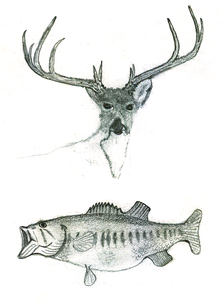Backpack Camping and Woodland Survival/Skills/Hunting and gathering
Historical, subsistence and sport hunting techniques can differ radically, with modern hunting regulations often addressing issues of where, when and how hunts are conducted. Techniques may vary depending on government regulations, a hunter's personal ethics, local custom, firearms and the animal being hunted. Often a hunter will use a combination of more than one technique, and some are used primarily in poaching and wildlife management, explicitly forbidden to sport hunters.

Navigation
- Baiting is the use of decoys, lures, scent or food to attract animals
- Blind or stand hunting is waiting for animals from a concealed or elevated position
- Calling is the use of animal noises to attract or drive animals
- Camouflage is the use of visual concealment (or scent) to blend with the environment
- Dogs may be used to course or to help flush, herd, drive, track, point at, pursue or retrieve prey
- Driving is the herding of animals in a particular direction, usually toward another hunter in the group
- Flushing is the practice of scaring animals from concealed areas
- Glassing is the use of optics (such as binoculars) to more easily locate animals
- Glue is an indiscriminate passive form to kill birds
- Netting, including active netting with the use of cannon nets and rocket nets
- Scouting includes a variety of tasks and techniques for finding animals to hunt
- Spotlighting or Shining is the use of artificial light to find or blind animals * before killing
- Stalking is the practice of walking quietly, often in pursuit of an identified animal
- Still Hunting is the practice of walking quietly in search of animals
- Tracking is the practice of reading physical evidence in pursuing animals
- Trapping is the use of devices (snares, pits, deadfalls) to capture or kill an animal